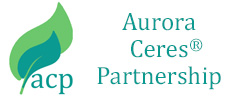The benefits of a different perspective for your discovery Market Mapping and Technology Scouting exercise.
Innovation, R&D, NPD, call it what you will, can be a challenging process. It is often driven by different motivators: economic drivers, necessity, opportunity, trends. Regardless of the initiator, from a development perspective, they all share the same starting point: The blank sheet of paper. That point where the developer goes back to the lab or kitchen, sits down and asks, “So, what now? What am I going to do to deliver against the brief in the short time required?”
The developer’s challenge is to effectively search for the new and emerging materials and technologies that will help the new product stand out in a crowded marketplace and provide an innovative edge. Jumping in too quickly risks omitting valuable promising solutions. Taking a long time to evaluate the possibilities risks missing the chance to be a market leader.
Incorporating a preliminary Market Mapping and Technology Scouting exercise into the discovery stage of the process will position the project to deliver a thorough and efficient development path. A preliminary Market Mapping exercise will unearth gaps and opportunities in the market as informed by the trends and competitor space. Technology Scouting at the earliest stage of the process ensures that fertile ground in the guise of emerging technologies and solutions that are being deployed in the target product’s category, as well as in other categories or industries, are identified and considered from the outset. This technology intelligence delivers a rich and relevant landscape of solutions that starts to fill that blank sheet of paper.
These early Market Mapping and Technology Scouting insights should be drawn from a broad scope of available technologies and solutions. Whether it’s the new range from an existing supplier, or an existing offering from a new supplier, right through to a thought process that leads to exploring how another category solves its challenges. Whatever the scenario, since they are ‘new to you’, they present a new angle for the product, and should not be disregarded, with ‘not invented here’ thinking. Learning from adjacent and cross category scouting often shines a light onto blind spots and inspires new thinking.
This snapshot can also provide real insight into the secrets behind the competitor products already on the market and building on this knowledge will develop the capability to match or exceed the competition. What matters is that your development efforts are coming from an informed position, from the outset.
This preliminary Market Mapping and Technology Scouting doesn’t have to be expensive or time consuming. Launching every project with an exercise that aims to advise the technology starting point and scope will save time and effort whilst optimising the outcome. It is often said that problems cannot be solved with the same thinking that created it. This is true with innovation where a different point of view and perspective can provide a catalytic effect to the process. Solutions from other fields and critical thinking from ‘an outsider looking in’, will bring a tangible benefit and disruptive force to your discovery stage that can help you effectively shape the next development stage.




